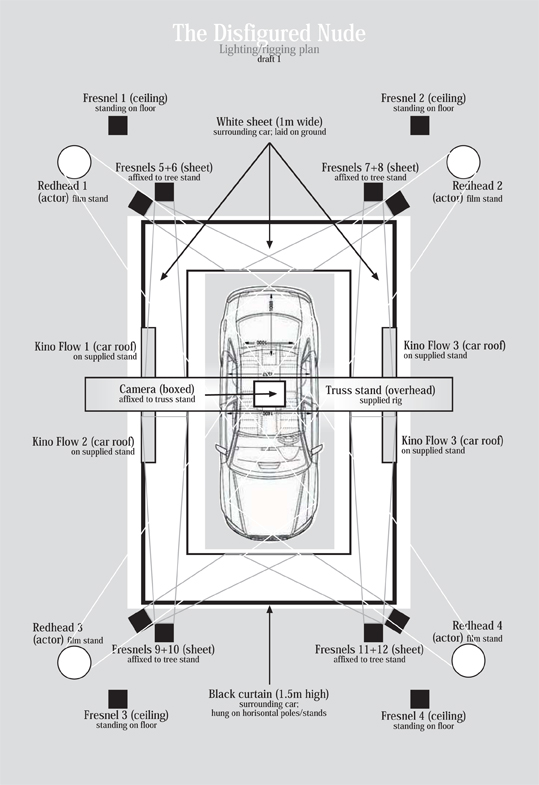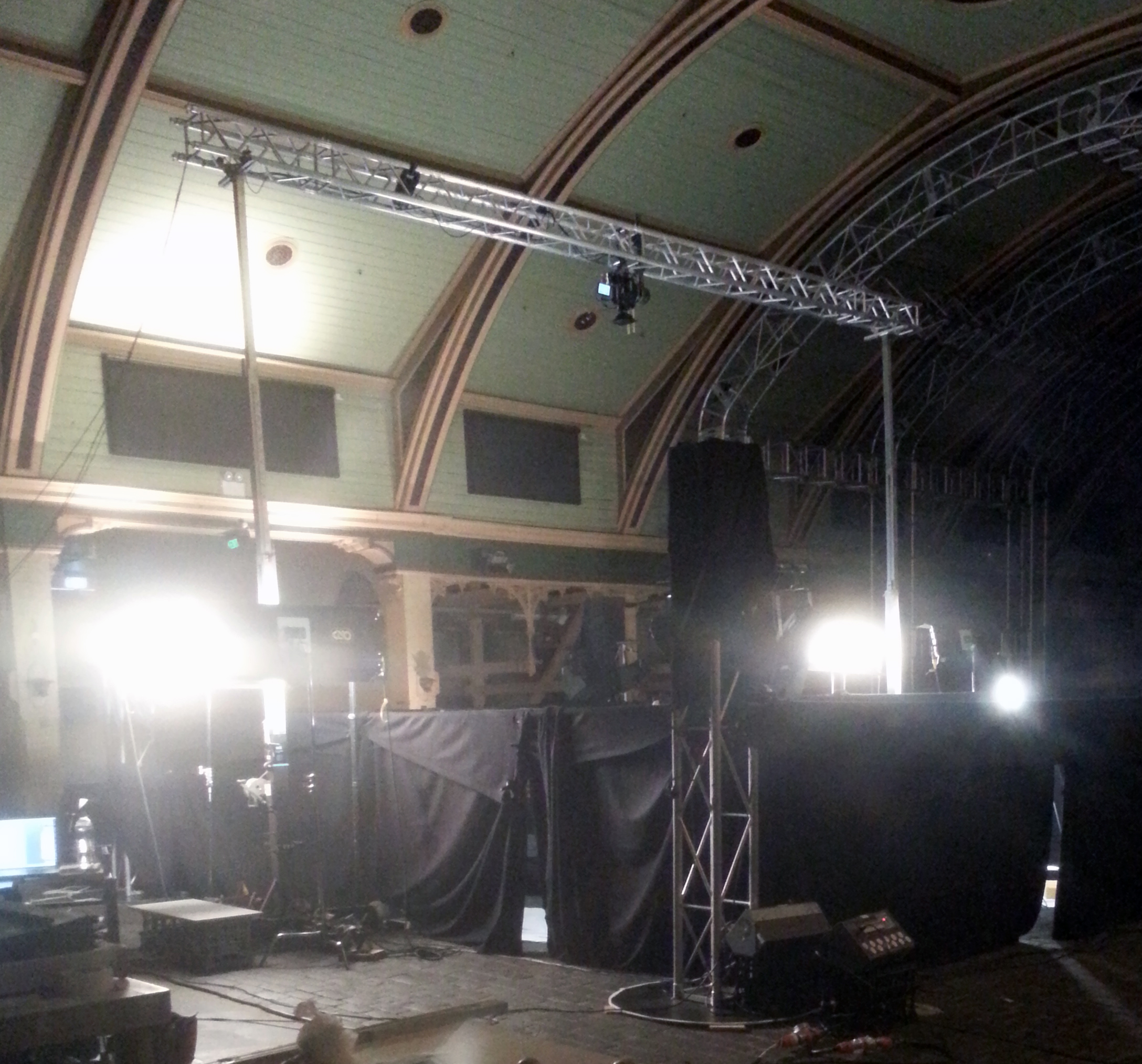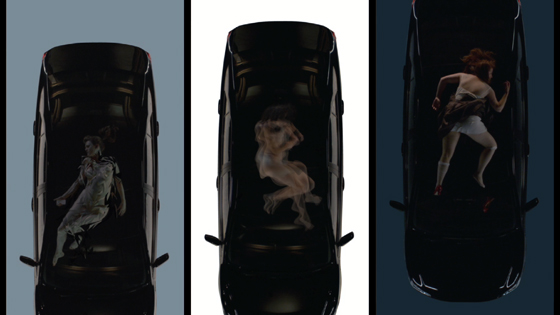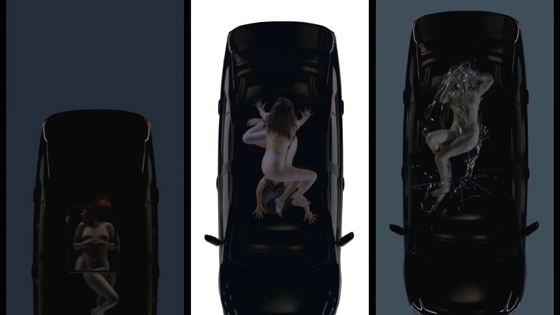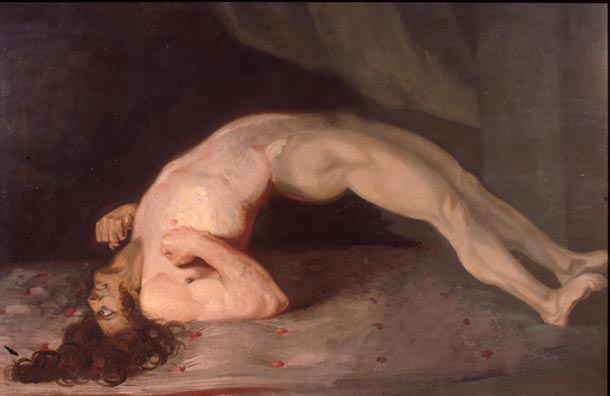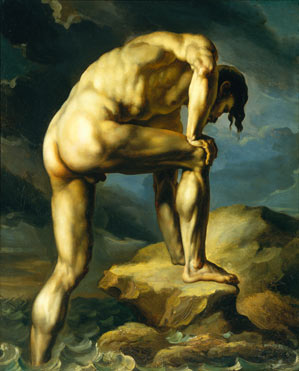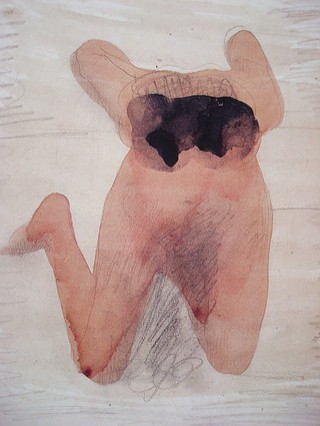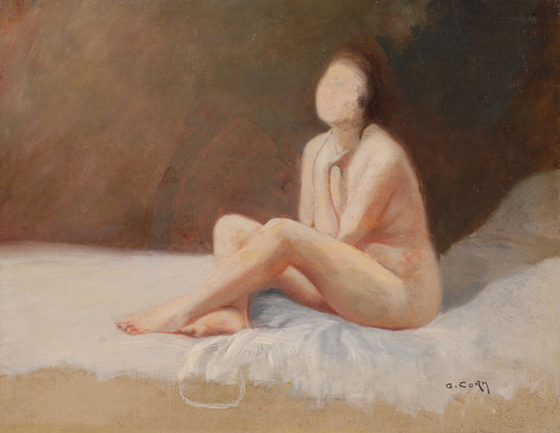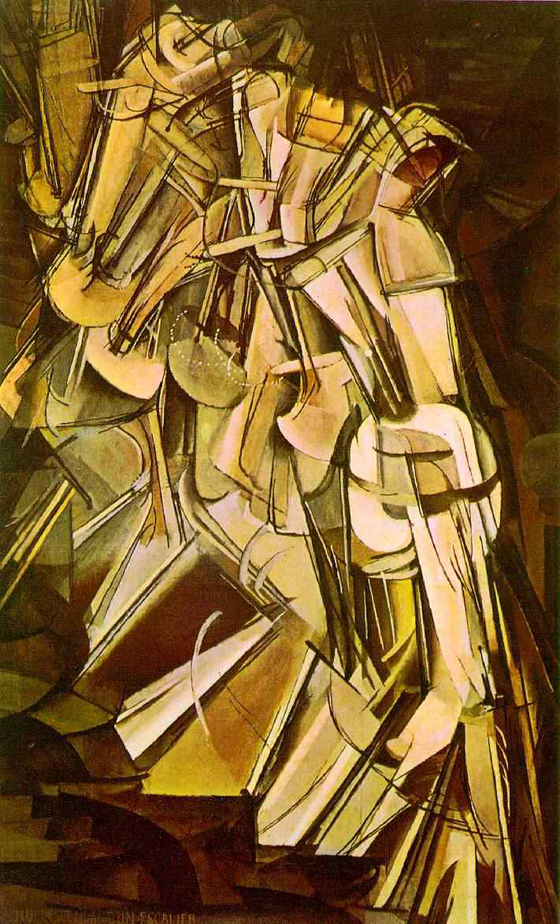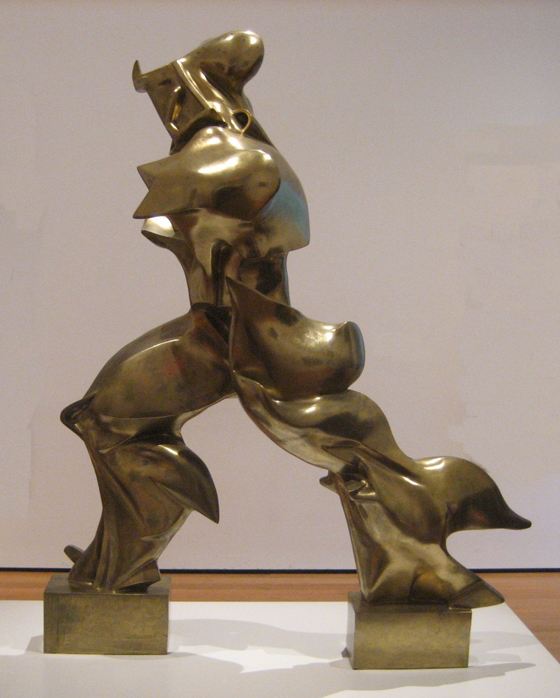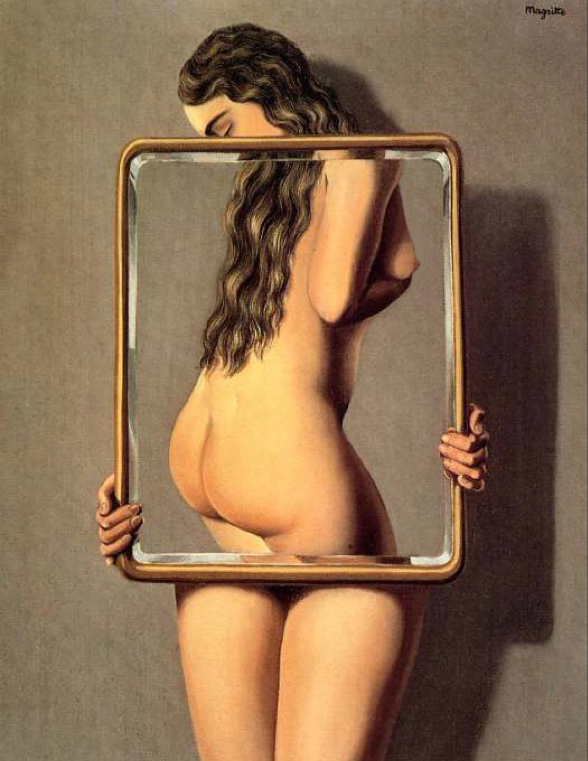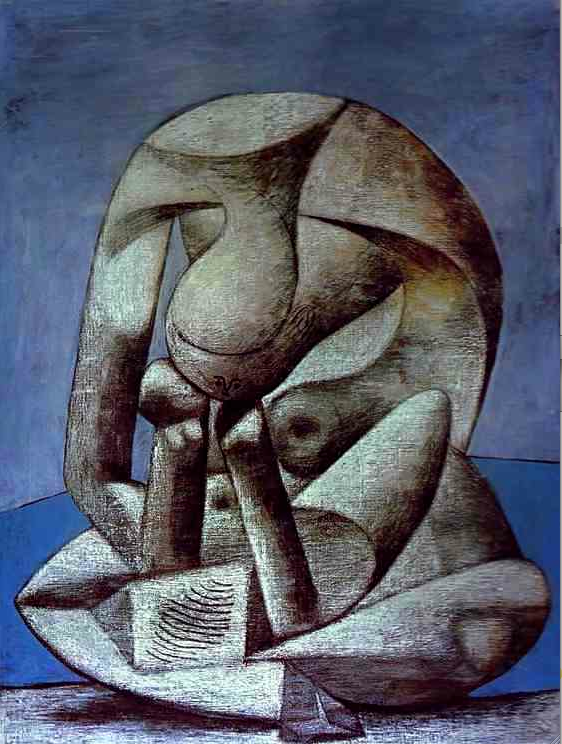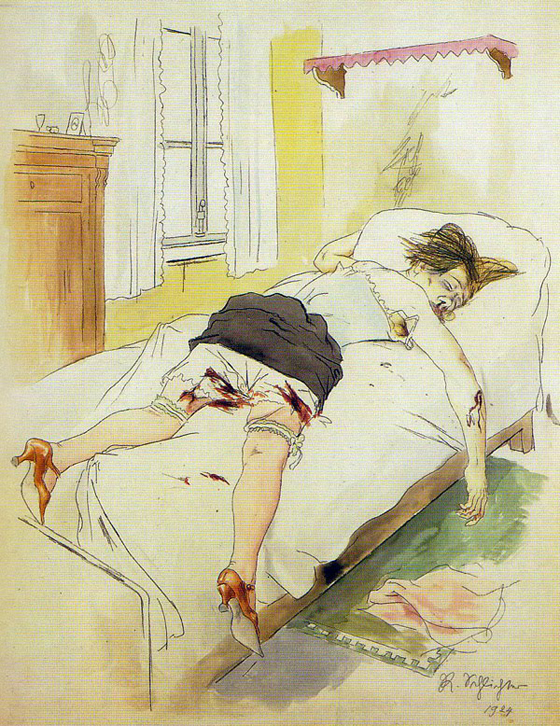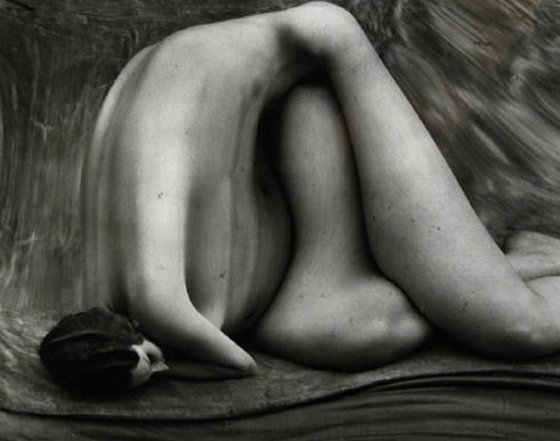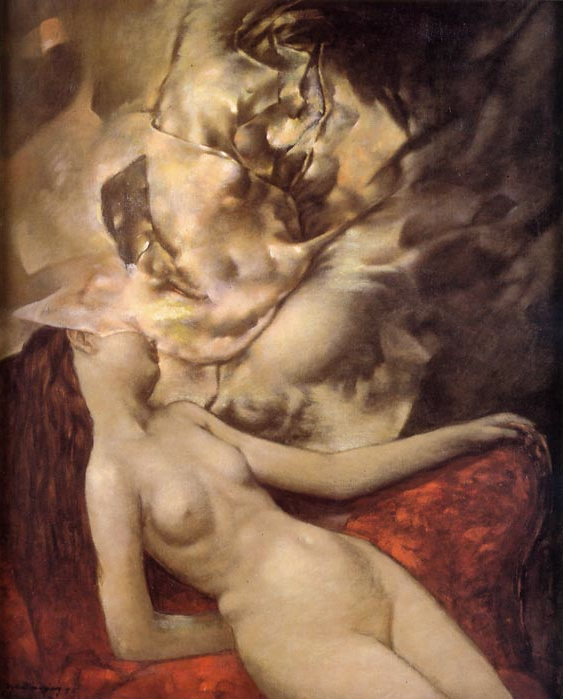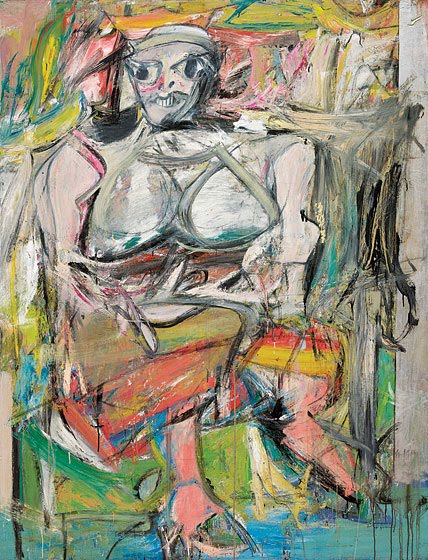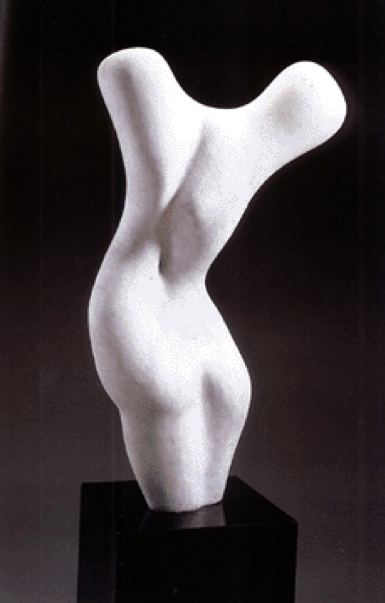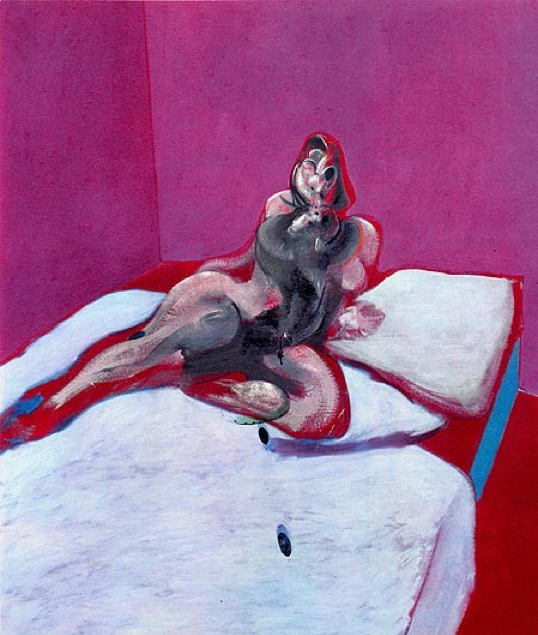Colour Me Dead - Chapter 8
The Disfigured Nude - excerpt (3-screen compile) 5' 00", silent - © 2014Background
The Disfigured Nude is the 8th production in the 18-part series of films, animations and prints collectively titled Colour Me Dead. All the productions in this project are based on research which is forming the basis for the in-development book Colour Me Dead: Art, Sex & Psychos.
The Disfigured Nude recreates a selection of 19thC. and 20thC. works which target the female nude as the matter for demonstrating acts of symbolic and corporeal disfiguration. In each recreation, a performing nude sits atop an Audi4 rooftop, re-interpreting the dynamic violence of the original painting and performing it in real-time for a camera suspended overhead. The car slowly moves into frame and likewise exits once the short performance is finished. The work is silent, and is played across 3 non-synchronised screens in vertical format, so that the cars slowly move downward, referencing a slow-motion poker machine screen tumbling.
Credits
Nudes: Kat Henry, Annie Last, Amanda Morris
On-set assistant: Simone Lau
Cinematography: Michael Williams
Key grip: Dean Garro
Camera rigging: Dave Guest
Lighting assistants: George Stajsic & Andrey Walkling
Lighting desk: Diego Ramirez
Script, direction, post-production FX: Philip Brophy
Thanks to: Jim Stenson (Artshouse Meat Market), Michael Quinlan (RMIT)
Produced with assistance from the Visual Arts Board of the Australia Council.
Overview
Acts of disfigurement are impelled by the drive to vivify the destructive havoc wrought upon form. Far from annihilation, decimation or eradication, disfigurement retains and displays the mangled form in order to prove the power of negation. When this is applied to representations of the human form, the body is presented only to testify to its representational breakdown. Modernist by any other name, The Disfigured Nude is the nullifying nexus of destruction and creation. It portrays the naked body as fully-formed by God as Judea-Christian thought can attest, but simultaneously remodels it with brutish secular violence.
The pictorialised nude bears the weight of this aggressive impulse to desecrate the body’s temple. Trickling toward the end of the 19th C. and speeding into the early 20th C., the female nude became a cypher for terse revisions of representational practice: to redraw the world, she was transformed into the symbolic canvas for a spectrum of avant-garde visuality. Often, paintings of nudes here looked less like an imaginary vision of a driven artist and more the forensic document of a driven killer. Her body would be slashed, her face mashed, her limbs severed, her spine contorted. Colour me Dead coldly queries how her form elicited lustmord in artists and schadenfreude in aesthetes.
The Disfigured Nude - 3-screen view © 2014Technical
The Disfigured Nude was envisioned as a series of performative interpretations of the selected paintings. In place of simply have the nude model perform the painting standing up, the idea was to stage things horizontally, so that the performer was flattened to the ground by gravity, while the camera would be placed overhead. The result is that the performances look like they are occurring as if standing up, but in reality they are being performed atop a luxury car roof and bonnet. A strange ‘flatness’ is incurred by this process which serves to intensify the pictorial nature of ‘flattening’ the nude for its disfigurement.
3 models were secured, each performing 5 paintings of their choice from the suite of 15. On-set rehearsals quickly worked out how the performance should unfold, as each model grappled with the strange logistics of performing on top of the car.
With gleaming new luxury cars being notoriously difficult to photograph inside a studio due to the logistics of hiding the camera mechanics from being reflected in the car’s numerous surfaces, a large studio environment was commandeered for the shoot. The original idea was to have the car (an Audi4) move into camera frame, then exit – but this proved too difficult to recreate for each take. So the car was left in the central space and an elaborate scaffolding was erected around the car.
The Disfigured Nude - lighting & rigging planBasically the space was contained by 4m high black drapes so that none of the studio walls would be reflected in the car. Lighting was then strategically arranged to highlight the car without revealing their spots, while banks of fluorescent lights were similarly placed. Two additional fluoro banks were staged at the left and right of the car. These banks were manually turned onto the cars to illuminate the side panels on cue, for when the car would appear centre in the vertical frame.
The Disfigured Nude - production documentation, Meat Market, Melbourne, 2014Each sequence was performed in real time, with a count being called out for cuing the lights (all of which were separately faded up through a mixing desk) to the point of brightly illuminating the car and the nude performer. The count continued for the darkening and ‘exiting’ of the car.
About half of the sequences then entailed post-production effects to enhance the models’ bodies and accentuate the visual mode of disfigurement relative to the painting. Finally, the completed sequences were shifted within the frame so that the car appears to slowly drive into frame, hold for a few minutes, then slowly exit. No effecting was done elsewhere: the changes in light and tone are handled by live on-set lighting controls.
The Disfigured Nude - 3-screen views © 2014


